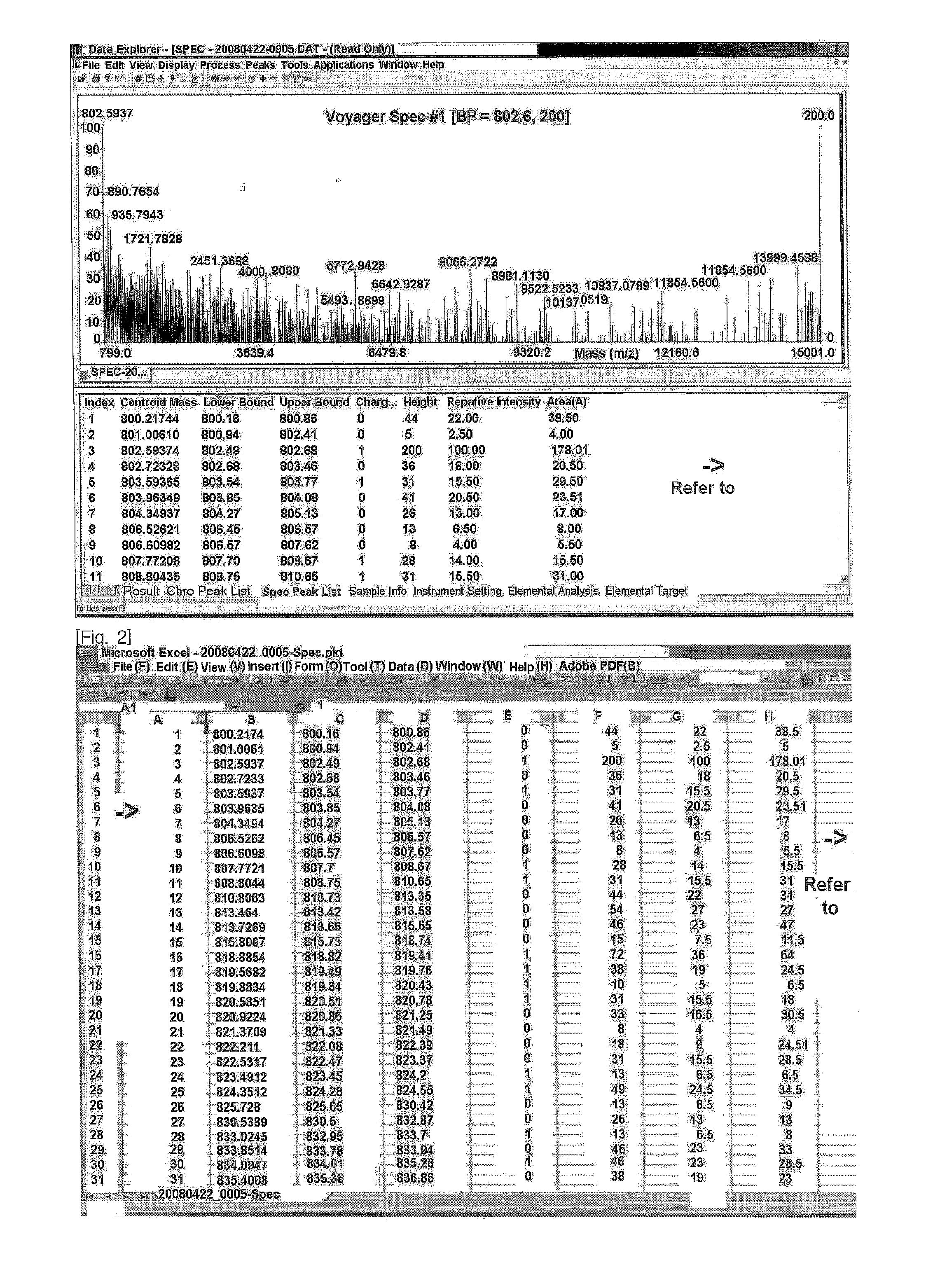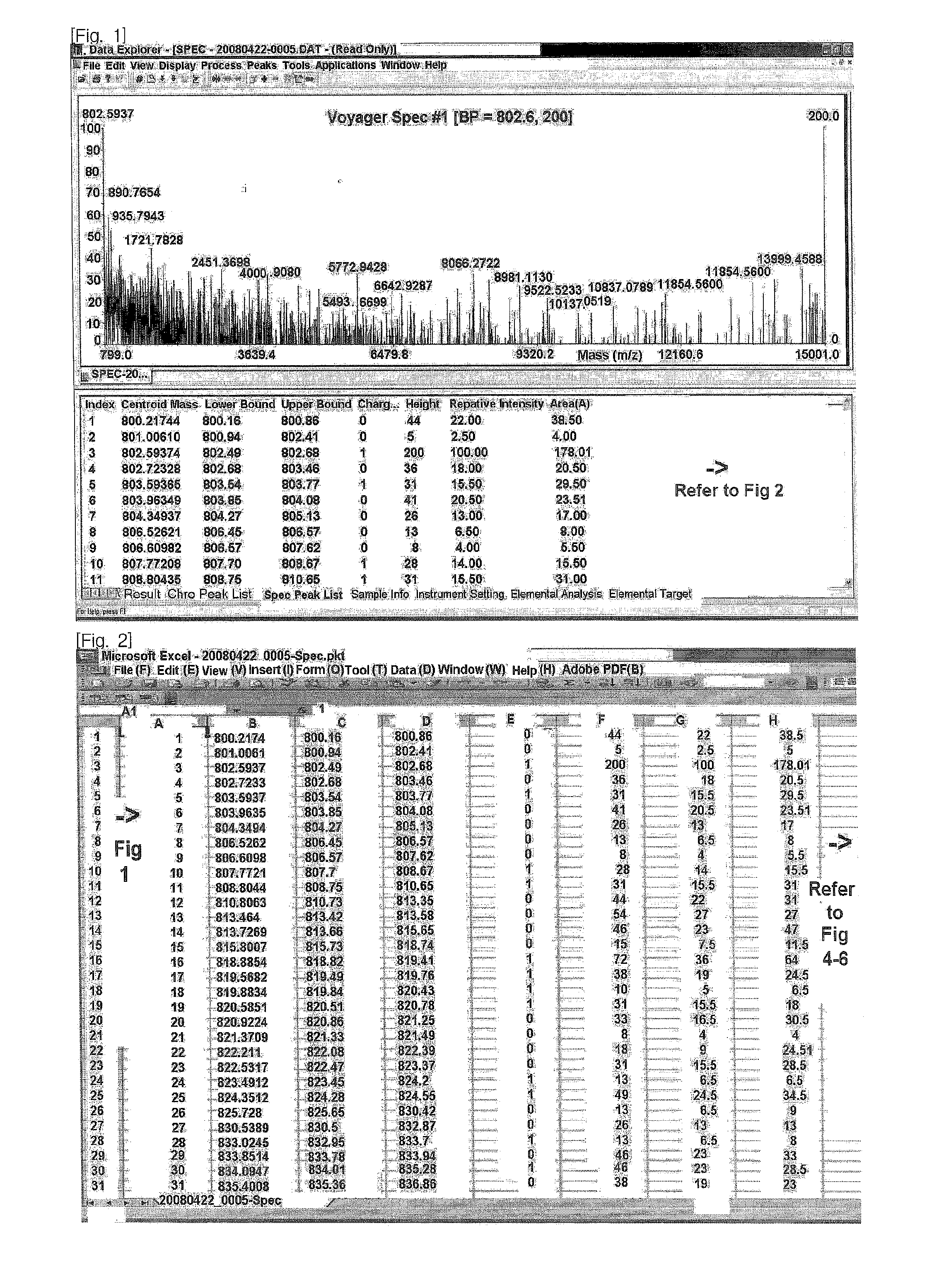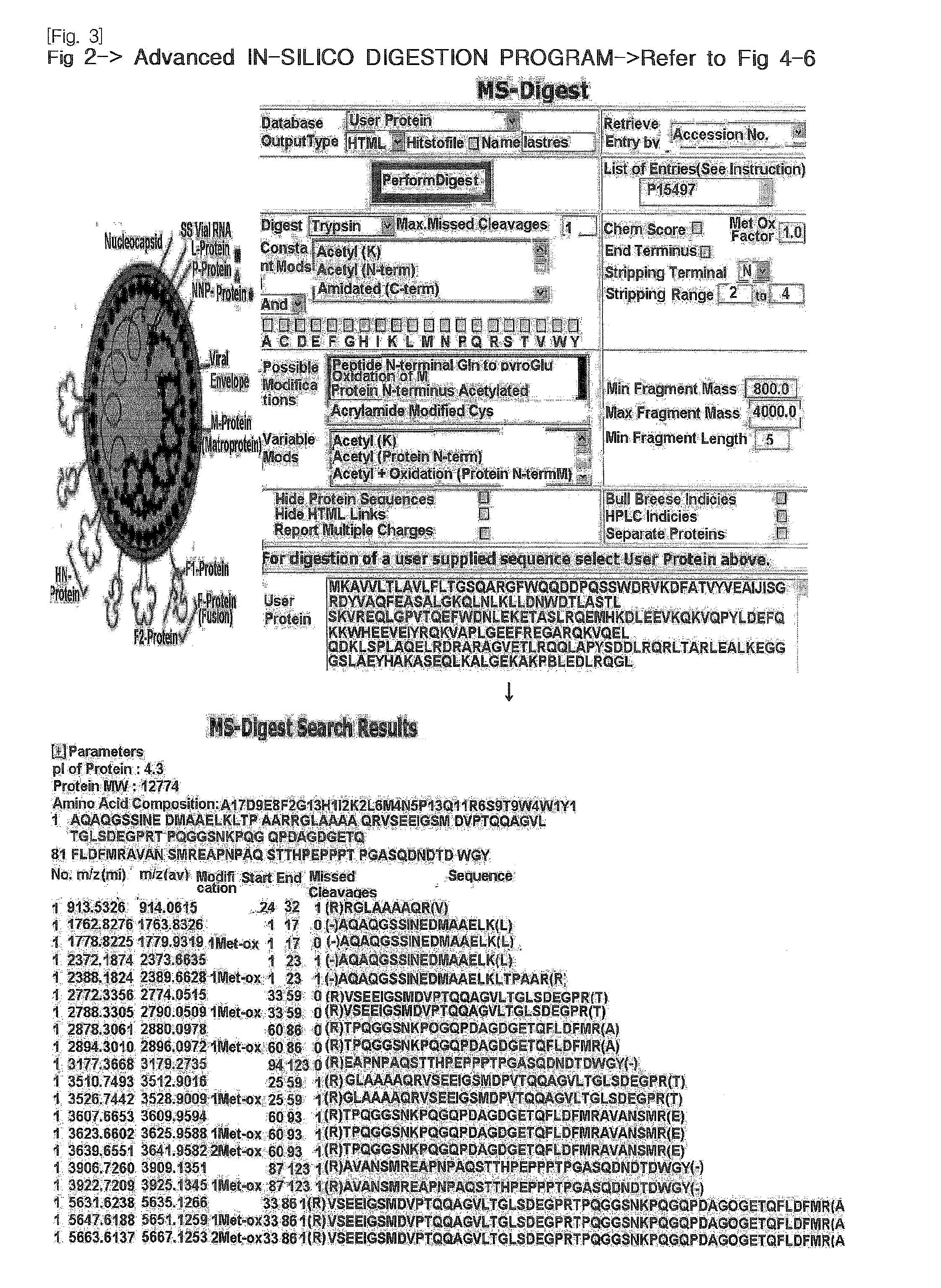Method and system for diagnosing virus
a virus and virus technology, applied in the field of virus diagnosis, can solve the problems of large economic damage, diagnostic methods capable of accurately differential diagnosis, and the host's death, and achieve the effects of reducing the time required for protein degradation into peptides, reducing the time required for diagnosing the virus, and reducing the time required for diagnosis
- Summary
- Abstract
- Description
- Claims
- Application Information
AI Technical Summary
Benefits of technology
Problems solved by technology
Method used
Image
Examples
example 2
[0039]Virus was separated from the samples, and 10 μl (containing 4.811 μg virus / μl) of an aliquot of the virus was transferred to an e-tube. 20 μl of a viral lysis buffer [containing 1% Triton X-100 (Amresco), 2 mM DTT (DL-dithiothreitol, Promega) 150 mM NaCl (Amresco) and 10 mM Tris-HCl (Amresco), pH 7.4] was added thereto, and the mixture was incubated at room temperature for 15 minutes.
[0040]Before the use of Microcon as described below, 470 μl of resin water was added in order to determine the maximum concentration.
example 3
Filtration of Lysate
[0041]A micron centrifugal filter device (YM-3; nominal molecular weight limit: 3,000 Daltons; Amicon) was used to separate only pure disrupted virions from the reaction solution consisting of the mixture of disrupted virions and virus-disrupting buffer, obtained in Example 2.
example 4
Degradation of Protein by Microwave Irradiation
[0042]25 μl of 10 mM DTT was added to 10 μl of the virion solution obtained in Example 3 and was slightly mixed for 20 minutes. 20 μl of trypsin solution (20 μg / ml trypsin in 50 mM NH4HCO3) was added thereto, and then the cap of the e-tube was perforated with a syringe needle to form 3-4 holes. Then, the mixed solution was irradiated with microwaves in a domestic microwave oven (SAMSUNG RE-442B) for 10 minutes. After irradiation, the solution was cooled at 4° C. for 5 minutes, and then 20 μl of a calibrant (insulin from bovine pancreas; FW=5733; SIGMA) was added.
PUM
 Login to View More
Login to View More Abstract
Description
Claims
Application Information
 Login to View More
Login to View More - R&D
- Intellectual Property
- Life Sciences
- Materials
- Tech Scout
- Unparalleled Data Quality
- Higher Quality Content
- 60% Fewer Hallucinations
Browse by: Latest US Patents, China's latest patents, Technical Efficacy Thesaurus, Application Domain, Technology Topic, Popular Technical Reports.
© 2025 PatSnap. All rights reserved.Legal|Privacy policy|Modern Slavery Act Transparency Statement|Sitemap|About US| Contact US: help@patsnap.com



